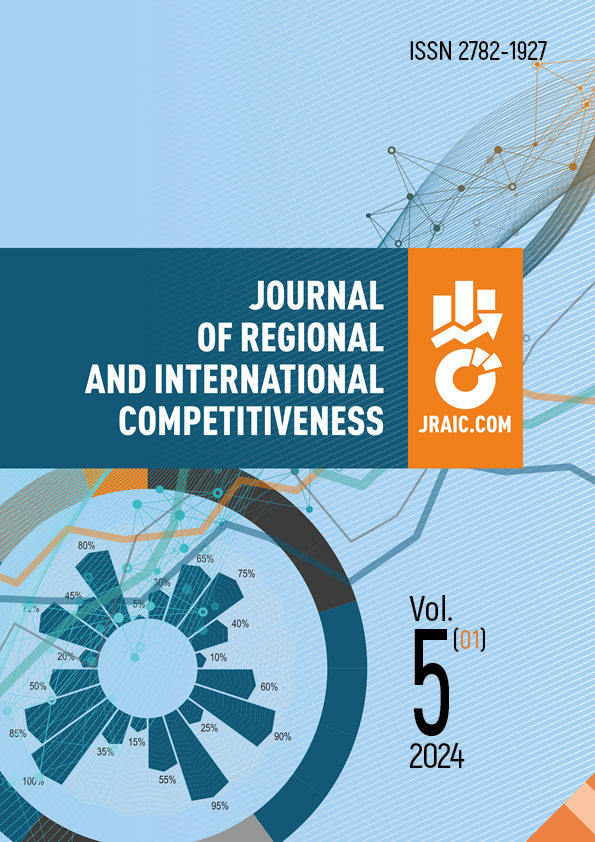Financial University under the Government of the Russian Federation
Moscow, Russian Federation
Moscow, Moscow, Russian Federation
Increasing electricity consumption in the modern world makes the unique nuclear power market. It provides growing secured demand, specific external development factors. However, only four companies involved in the design, engineering, and construction of nuclear power plants (NPPs). The competitiveness of those companies included into M. Porter’s theory framework, but has its own characteristics. The purpose of the study is to determine the specifics of companies competitiveness engaged in the design, engineering, and construction of nuclear power plants, and assess the factors and prospects for their development. Besides, we define the theoretical base of international competitiveness with regard to the specific features of this economic sector, characterise the companies operating on the market, and build a model of the competitiveness formation of four representatives under the domestic factors of development. In conclusion, we will present the prospects for ROSATOM development in an internationally competitive environment. The models of competitiveness formation show the positive impact of investments in human capital, ESG agenda implementation, and long-term prospects of R&D projects. The research provides information for developing the theory of competitiveness and improving the company’s activities in this economic sector.
company competitiveness, international competitiveness of the company, companies in design, engineering and construction of nuclear power plants, nuclear energy, ROSATOM
1. Conca, J. (2017). Westinghouse Bankruptcy Shakes the Nuclear World. Forbes, (31 march). Retrieved from: https://www.forbes.com/sites/jamesconca/2017/03/31/westinghouse-bankruptcy-shakes-the-nuclear-world/?sh=482f99c02688
2. Hult, G.T. (2012). A focus on international competitiveness. Journal of the Academy of Marketing Science, (40), 195-201. DOI: https://doi.org/10.1007/s11747-011-0297-7; EDN: https://elibrary.ru/FCUUJM
3. Johanson, J., & Vahlne, J.-E. (2011). Markets as networks: implications for strategy-making. Journal of the Academy of Marketing Science, 39(4), 484-491.
4. Kirca, A.H., Bearden, W.O., & Hult, G.T. (2011, December 1). Forms of market orientation and firm performance:A complementary approach. AMS Review. Springer.https://doi.org/10.1007/s13162-011-0020-3
5. Kirca, A.H., Hult, G.T. et al. (2011). Firm-specific assets, multinationality, and firm performance: a meta-analytic review and theoretical integration. Academy of Management Journal, 54(1), 47-72.
6. Melnik, O. & Yaskal, I. (2013). Theoretical approaches to concept of “Competition” and “Competitiveness”. ECOFORUM, (2).
7. Morgan, N.A. (2012). Marketing and business performance. Journal of the Academy of Marketing Science, 40(1), doihttps://doi.org/10.1007/s11747-011-0279-9 EDN: https://elibrary.ru/MXIQAX
8. Rugman, A.M., Oh, C.H., & Lim, D.S.K. (2012). The regional and global competitiveness of multinational firms. Journal of the Academy of Marketing Science, 40(2), doihttps://doi.org/10.1007/s11747-011-0270-5.
9. Shkiotov, S.V. & Markin, M.I. (2020). A model for measuring the impact of productivity and quality of life on national competitiveness. Journal of Regional and International Competitiveness, 1(1), 20-34.
10. Short, J.C., Ketchen, D.J., Palmer, T.B., & Hult, G.T. (2007). Firm, strategic group, and industry influences on performance. Strategic Management Journal, 28(2), 147-167.
11. Varga, J (2017). Bases for organizational competitiveness: organizational competitiveness status report in Hungary. Economy & Business, (11).
12. Jones, R.M.S. & Voight, J. (1990). The cost of nuclear and conventional production of basic electricity. Bulletin of the IAEA.
13. Kayumov, M.G. (2016). The cooperation of the Russian Federation and Australia in the sphere of nuclear power: history, current state and prospects. Liberal Arts in Russia, 5(3), 310-318. DOI: https://doi.org/10.15643/libartrus-2016.3.6; EDN: https://elibrary.ru/WDHZVV
14. Porter, M. (2016). International competition. Competitive advantages of countries. Moscow: Alpina Publisher.
15. Snitko, L.T., Soluttseva, S.N. & Grineva, N.A. (2008). Competitiveness of the region: theoretical foundations and directions of improvement. Belgorod: Publishing house "Cooperative education".
16. Shkiotov, S.V., Markin, M. I. & Majorova M.A. (2016). Competitiveness of the Russian economy: verification of the theory of national competitiveness. Naukovedenie, 8(37).
17. Shulishov, D.I. (2021). Improving the international competitiveness of an industrial enterprise of the Russian Federation: Master’s thesis. Institute of Economics and Management of Sciences: 38.04.02. Yekaterinburg.




















